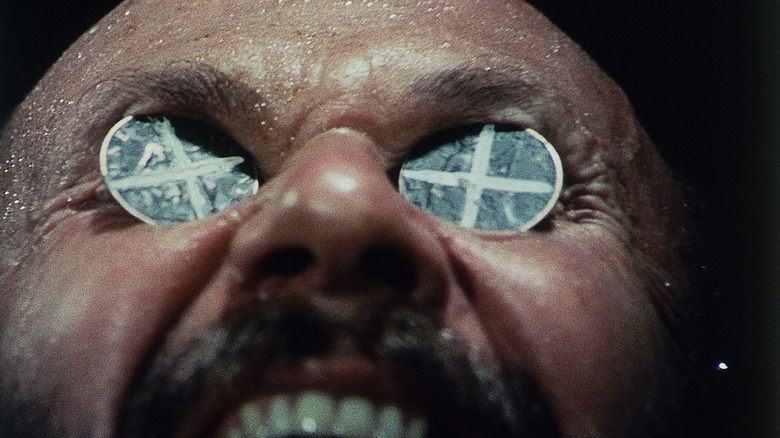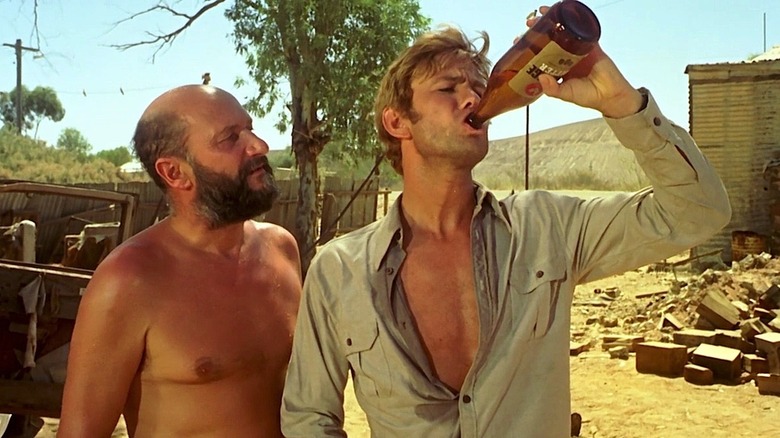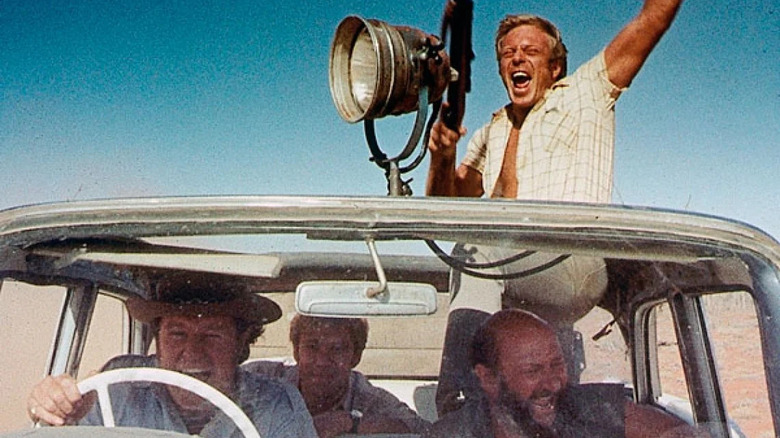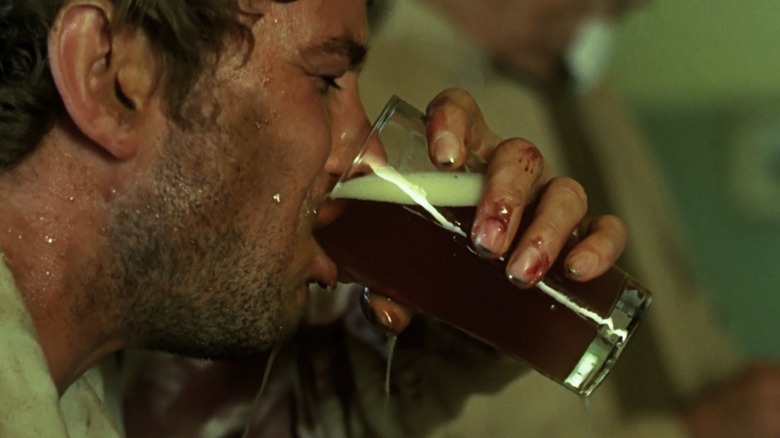The Controversial Australian Horror Movie That Was Almost Lost Forever
"Wake in Fright" is one of the most violent movies I've ever seen. I don't mean in terms of actual violent acts, because there are very few other than its most controversial scene, which we'll come to in a bit. I'm talking more about the tone, an atmosphere of latent aggression that made me want to duck for cover, as if someone was about to burst in at any moment and kick my head in.
The peculiarly unsettling vibe of Ted Kotcheff's blazing outback masterpiece has led many critics to call it a horror, but does it fit that genre? Well, if you think about horror in terms of maniacs in masks or malevolent ghosts, then maybe not. I regard it as a horror more in the sense that Colonel Kurtz in "Apocalypse Now" uses the word. He has seen the cruel primal instincts that lurk just beneath the pretenses of civilized society, and the speed — and even eagerness — that some people regress back to them.
"Wake in Fright" revels in that caveman id bubbling just below the surface of everyday life, and it's scary just how quickly our outwardly respectable protagonist embraces it, thoroughly debasing himself before the shame comes crushing in. One wobble at the wrong moment and anyone can lose themselves, it suggests. It is a grueling watch, but one that I gladly put myself through over and over again, simply because it is such an intensely vivid experience.
Yet if it wasn't for the intervention of a few determined individuals, "Wake in Fright" is a classic that might have been lost forever.
So what happens in Wake in Fright again?
It's the last day of term before the Christmas break in Tiboonda, a tiny outpost in the scorching Outback. Middle-class teacher John Grant (Gary Bond) can't get away fast enough, looking forward to a few weeks back in civilization with his girlfriend in Sydney. He has no choice but to return, though, because he is bonded for another year in this desolate no-horse town.
He takes the train to Tiboonda to Bundayabba, a brawny mining town where blokes outnumber women by about ten-to-one. With one night in "The Yabba" before his flight to Sydney, Grant decides to check out the nightlife, which mostly involves drinking superhuman amounts of beer in hot, crowded rooms and gambling on a coin toss game called Two-up. He also meets two men who will serve as his dubious guides through his lost weekend; Jock Crawford (Chips Rafferty), an imposing local policeman, and Doc Tydon (Donald Pleasance), an alcoholic doctor who survives in the community with no money at all, thanks to the Yabba's aggressive hospitality.
Grant tries his luck at Two-up, and wins a decent stack at first. He suddenly sees a way of buying out his contract early and can't resist playing again, but this time loses every penny. Now he's stranded with no means of getting to Sydney. A crazy amount of drinking follows as Grant launches himself into a grim downward spiral of debauchery, hitting rock bottom as roomies with Tydon in his fly-blown shack. With the limitless hospitality of the locals and all roads apparently leading back to the Yabba, will Grant ever escape?
Why was Wake in Fright controversial?
"Wake in Fright" performed poorly at the box office in Australia, upsetting audiences with its raw depiction of working-class life in the Outback. It received a better reception abroad, especially in France, where it ran for five months and received a nomination for the top prize at Cannes. The film also generated controversy thanks to its infamous kangaroo hunt scene, where Grant and his newfound drinking buddies drunkenly slaughter a whole bunch of the creatures. It only lasts a few minutes but feels like forever, and I always skip forward on a rewatch because it's very upsetting. Director Kotcheff said in a 2009 interview:
"One thing I feel would be totally immoral and unacceptable, to hurt or kill any kangaroo for the sake of a film... so it created problems for me, that sequence, because I was not going to allow that to happen, as a matter of principle."
Kotcheff navigated that problem by filming professional kangaroo hunters and splicing the footage with shots of the actors firing their rifles. The director is still visibly disturbed by what he saw on the hunt:
"Around two o'clock in the morning, they started to miss. When I say 'miss,' they shot the animal, but they didn't hit them in the kidneys, the heart, or the brain, they just shot the animal, and there would be blood gushing everywhere, it was nightmarish. And I couldn't understand what was happening. When I glanced in, there was two thirds of a bottle of scotch had been consumed, because it was cold out there, and ... it interfered with their aim. I hate to say it, because... we used that footage, of course, because our characters were not professionals and they were missing."
"Wake in Fright" carries a disclaimer advising viewers that the footage is from a professional hunt, but that does little to soften the impact of the scene. Twelve people reportedly walked out of a screening at Cannes in 2009 (via Senses of Cinema), and the kangaroo slaughter is the main reason the film still holds an 18 certificate in the UK (via BBFC).
How Wake in Fright was rescued from oblivion
For its reputation as one of the key films that kicked off the Australian New Wave, "Wake in Fright" was considered lost for decades. If it wasn't for the persistence of Anthony Buckley, who worked as editor on the film, this brutal masterpiece might have joined the list of long-lost classics like "London After Midnight" and "The Story of the Kelly Gang."
How did "Wake in Fright" get lost in the first place? The sad answer is that in the past, sound and image recordings weren't always regarded as something worth keeping. In Australia, even after the National Film & Sound Archive was established in 1984, it was still standard practice to destroy prints of movies after the theatrical run was over. Especially if it was a flop (via The Conversation), and "Wake in Fright" certainly fell into that category at home.
With the master negative missing and existing copies used until they were irreparably damaged, "Wake in Fright" was fading from existence. Thankfully, in 1996, Buckley set out to find the missing negative. Through a combination of detective work and sheer determination, he eventually traced it to a storage vault in Pittsburgh, where the long lost 35mm negative sat in a container full of material marked "for destruction." The film was salvaged and, eight years after Buckley started his search, "Wake in Fright" arrived back in Australia for the process of restoration.
Thanks to Buckley, "Wake in Fright" still exists in all its grimy, brawling, beer-chugging glory, ready to put the sweats on many future generations of movie lovers.



